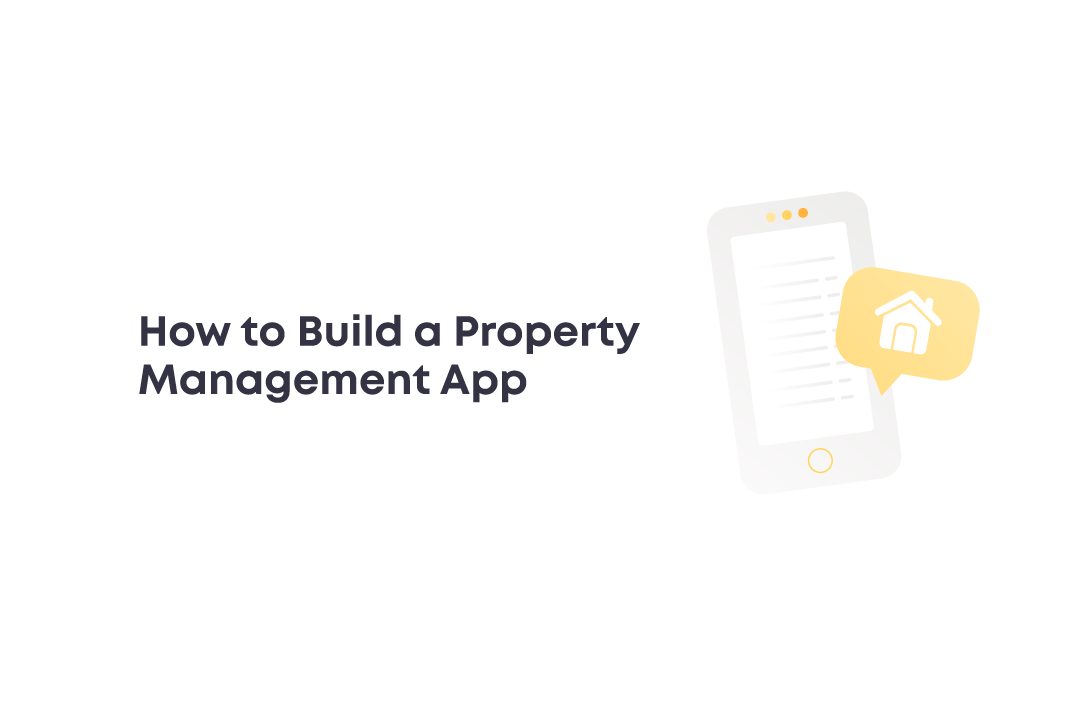Are you ready to take your real estate business to new heights and impress your tenants? Consider opting for customized property management software that can be tailored to meet your specific needs and give your tenants exactly what they want. And the great news is that building your own property management application doesn’t have to be a daunting task. Here’s a comprehensive guide that will navigate you to create a top-notch application. So, let’s dive in.
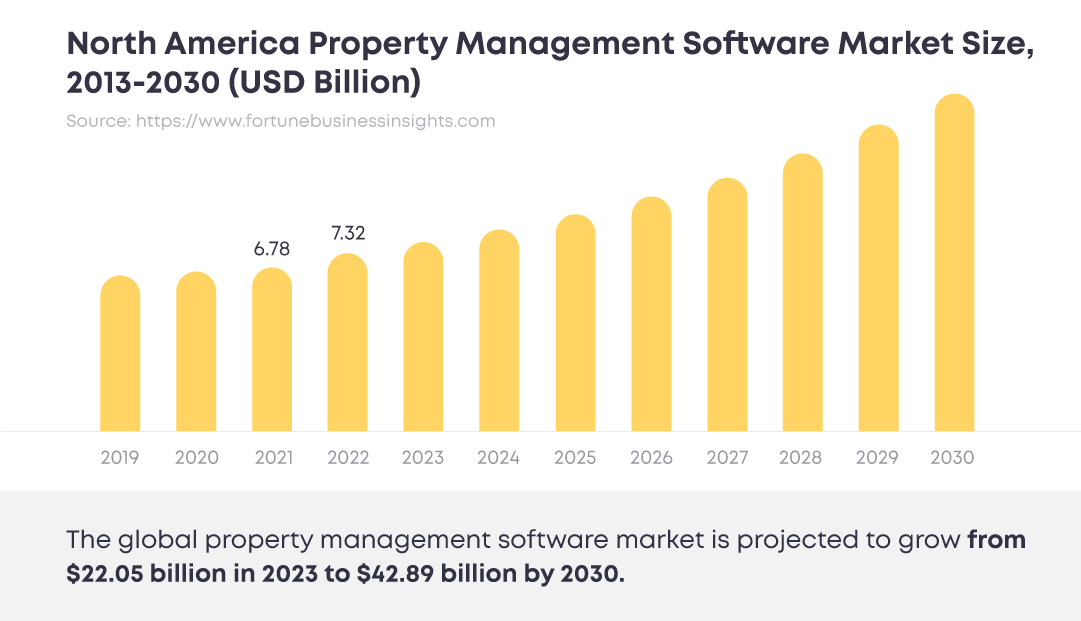
Challenges Addressed by a Property Management Software
Overwhelmed with the myriad responsibilities that come with property management? Even the savviest property managers sometimes feel like they’re drowning in a pool of duties. Imagine a solution that handles everything from rent collection and tenant screening to negotiations and request management. A skillfully designed property management app reduces your workload and changes the way real estate players operate.
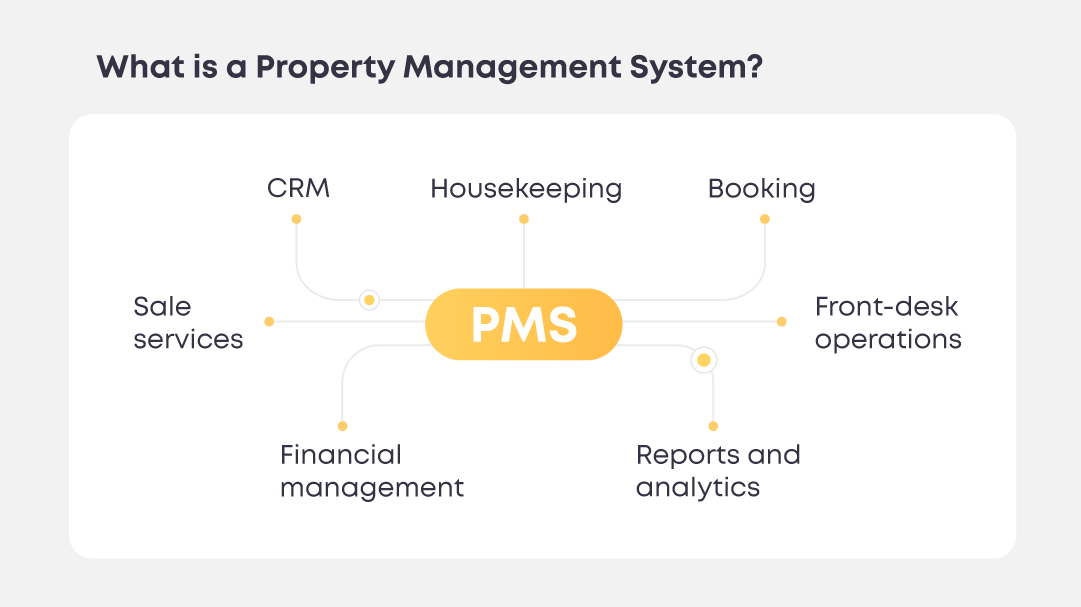
Look closer at five key challenges a property management app can take off your plate:
- Rising costs of running a property management company. Managing a property management company might be associated with higher expenses. However, using property management software saves you money. It automates a range of tasks and eliminates the need for manual and paper-based work, ultimately cutting down on overhead costs.
- A lot of time and resources that property management requires. Property managers can juggle multiple tasks and try to solve various issues simultaneously. Automating the lion’s share of tasks can free up employees and let them focus on more crucial business aspects.
- Not sufficient communication between managers and tenants. Tenants may not be aware of the situation with their rental payments or other requests, which could result in misunderstandings or conflicts with property managers. With a property management system, tenants can access a portal with all information gathered in a single place just a few clicks away, including maintenance requests, financial history, and rental information.
- Late or missed rent payments and other issues related to financial matters. You can deal with late or missed payments if this process isn’t automated. A property management system allows you to set automated reminders that are sent out on specific dates prior to the due payment date.
- Managing large amounts of data. Property managers must organize, keep, and track lots of data like rental payments, financial requests, etc., and overlooking some details could be a significant issue. With a property management solution, you can store data in one place with no need to use multiple platforms and systems.
What Are the Must-Have Features of a Property Management App?
Here are some essential features to consider:
1.Tenant management. Property management software should streamline contract management between tenants, landlords, and other parties.
2.Financial management. A property management app should offer accounting features, like finance reporting, tracking, and rent collection.
3.Communication channels. An app should include communication means to let renters, landlords, and other vendors seamlessly interact.
4.Online payments. Online payment processors should be integrated to allow users to easily pay rent and other fees.
5.Document management. Keeping and managing all the documents in one place eliminates manual operations.
6.Cloud storage. Cloud data storage keeps information safe and accessible from anywhere.
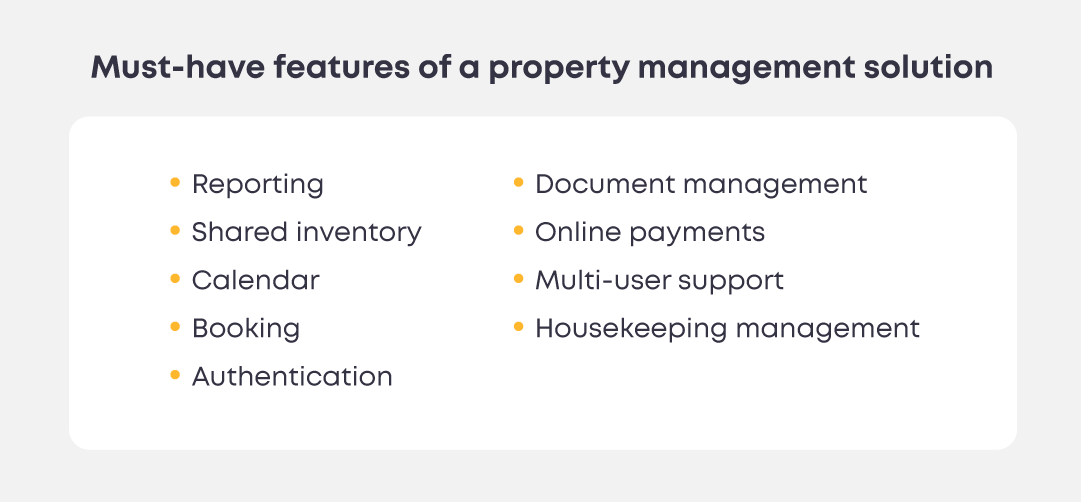
Stages of Property Management Application Development
Let’s outline the nine development stages and then figure out how to form a team according to the requirements of each development step.
Discovery Stage
A team of specialists involved in this phase investigates the target persona, budget, market needs, existing challenges, emerging trends, etc. This analysis allows them to define project goals, requirements, and product functionality to fulfill users’ expectations. For example, you may need your app to include features like financial reporting, maintenance tracking, calendar integration, property listings, captivating design, and others.
Creating Prototypes
At this stage, designers build prototypes to turn your ideas into a reality. A prototype is basically an animated product representation that allows both the client and development team to get the look and feel of an app. You can test how features work by navigating the interface and switching between different tabs. A prototype represents app behavior, including all user flows, which helps find gaps or generate new ideas for a better user experience.
Also, prototypes can be implemented in the same software used for creating the product design.
Choosing Technologies
The development team can choose the best technology stack and technical frameworks so that a product can fully address your business’s demands and help you reach high ROI. Generally, technologies used for app development may fall into four categories:
- Back-end. The back end of a system encompasses all the underlying components and processes of an application that are not directly accessible or visible to the end user. This includes the server-side code, databases, APIs (Application Programming Interfaces), and other backend services that work together to support the functionality and logic of the application.
- Front-end. The front end of the application contains all the visual and interactive elements that users directly engage with. It is part of the software that users can see, touch, and interact with.
- Mobile platform. A property management app can be developed and deployed on various platforms. Consequently, a team will require different technologies, tools, cloud infrastructure services like Azure and Google Cloud, and programming languages, such as React Native, Ionic, Kotlin, Swift, Java, Objective-C, etc., depending on the platform and desired functionality. .
- Infrastructure. Infrastructure refers to the fundamental elements that support the functioning of an application’s server-side code and other components in a secure environment. Various types of infrastructure are available, such as cloud-based infrastructure, such as Amazon Web Services (AWS), and traditional infrastructure that uses technologies like Linux and Apache.
Roadmap development
A roadmap is a project plan with defined tasks and timelines. App development roadmapping helps the development team and stakeholders stay on the same page and understand what each development stage consists of, such as costs and resources, along with the outcomes associated with each step.
Establishing a Team
A professional and well-coordinated team with the right number of specialists on board can successfully build and launch a property management app. Let’s look at what it takes to establish a team:
1.Define your project scope and find specialists with the proper expertise. You may need a native app for iOS or Android or hybrid app, a web application, a cross-platform, etc. Based on your requirements, you’ll need a team with particular skills and qualifications, such as iOS or Android developers, full-stack developers, DevOps engineers, UI/UX designers, and others.
2.Set roles and responsibilities. Each development team member has their own area of responsibility. For example, a project manager helps organize the development process; a QA specialist tests an application throughout all stages of the development process to identify any bugs; a business analyst tries to link the client’s vision regarding the product to the business needs and market reality, etc.
3.Evaluate multiple alternatives to form a team (like an in-house team or freelancers). If you don’t have the option to develop an app in-house, consider delegating the entire development process to a trusted vendor.
Building Architecture
Web and mobile app architecture is like a frame for the entire product creation process. It’s part of agile development methods and concerns all aspects of an app, including how data will be collected and moved, what tech stack will be used, how to scale the app in the future, and so on. An accurate project architecture helps run testing more efficiently and with fewer bugs.
UX/UI design
This is about the look and feel of your property management app. The design stage includes the following steps:
- Planning and research
- Specifying the toolset
- Developing a user-journey map
- Building and refining UX wireframes
- Creating prototype
- Graphic design
- Usability testing
- Transferring a project design to developers
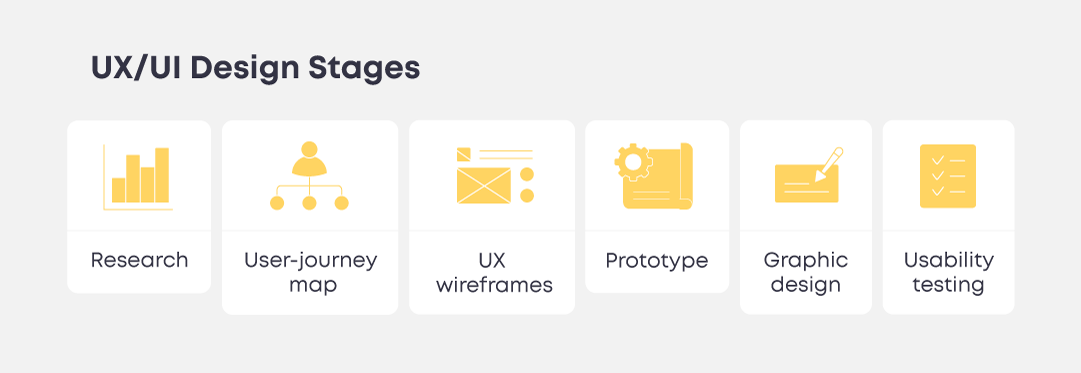
Creating MVP
MVP allows you to visualize the core features of an app and check how they function. Testing MVP helps collect feedback in order to determine what new features should be added to an upcoming version to better tailor an app to users’ needs.
Further development and testing
With an MVP and implemented adjustments in place, developers can start building a product. This stage typically consists of coding, testing, and debugging.
Tests must be run throughout the whole development process and is the prerequisite for each stage to ensure proper performance and the absence of bugs.
Final Thoughts
In today’s competitive real estate market, having customized property management software is no longer just an option but a necessity. It empowers businesses to boost performance, enhance transparency, minimize costs, automate routine tasks, and revolutionize communication between landlords and tenants. Given the numerous benefits it provides, investing in a tailored property management app can be a game-changing decision.
